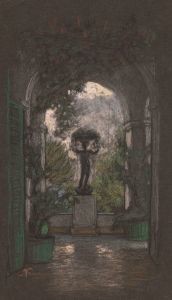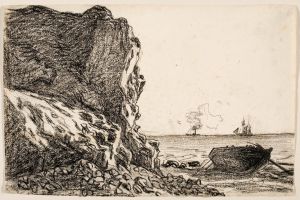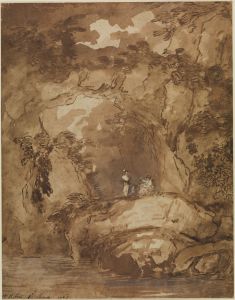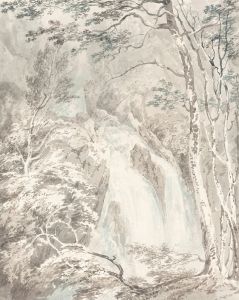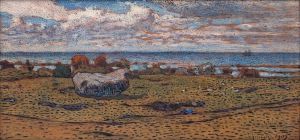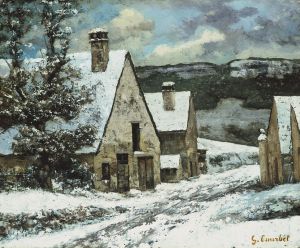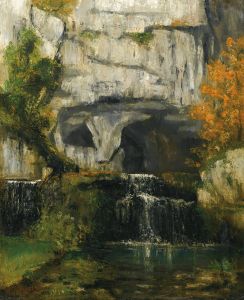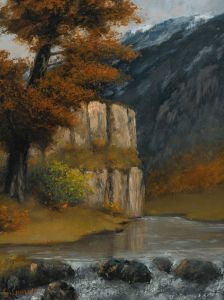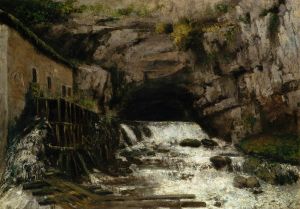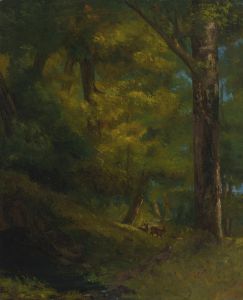
Grotto of Sarrazine near Nans-sous-Sainte-Anne
A hand-painted replica of Gustave Courbet’s masterpiece Grotto of Sarrazine near Nans-sous-Sainte-Anne, meticulously crafted by professional artists to capture the true essence of the original. Each piece is created with museum-quality canvas and rare mineral pigments, carefully painted by experienced artists with delicate brushstrokes and rich, layered colors to perfectly recreate the texture of the original artwork. Unlike machine-printed reproductions, this hand-painted version brings the painting to life, infused with the artist’s emotions and skill in every stroke. Whether for personal collection or home decoration, it instantly elevates the artistic atmosphere of any space.
Grotto of Sarrazine near Nans-sous-Sainte-Anne is a painting by the renowned French artist Gustave Courbet. Courbet, a leading figure in the Realist movement, is known for his commitment to depicting everyday scenes and landscapes with a focus on accuracy and detail. This particular work exemplifies his dedication to capturing the natural beauty of the French countryside.
The painting depicts the Grotto of Sarrazine, a natural cave formation located near the village of Nans-sous-Sainte-Anne in the Doubs department of the Bourgogne-Franche-Comté region in eastern France. This area is known for its picturesque landscapes, including limestone cliffs, dense forests, and clear streams, which have inspired many artists over the years.
Courbet was born in 1819 in Ornans, a town not far from Nans-sous-Sainte-Anne, and he often drew inspiration from the landscapes of his native region. His familiarity with the local terrain is evident in the meticulous detail and realistic portrayal of the grotto and its surroundings. The painting captures the rugged beauty of the cave's entrance, with its jagged rock formations and the lush greenery that frames it. The play of light and shadow in the painting highlights the textures of the rocks and the foliage, creating a sense of depth and realism.
Gustave Courbet's approach to painting was revolutionary for his time. He rejected the idealized subjects and styles of the Romantic and Neoclassical movements that preceded him, instead choosing to focus on real-life scenes and ordinary people. This commitment to realism is evident in Grotto of Sarrazine near Nans-sous-Sainte-Anne, where Courbet's attention to detail and his use of natural colors convey the true essence of the landscape.
The painting is also significant for its contribution to the development of landscape painting in the 19th century. Courbet's work influenced many other artists, including the Impressionists, who would later build on his techniques and ideas. His emphasis on painting en plein air, or outdoors, allowed him to capture the changing effects of light and atmosphere, a practice that would become central to the Impressionist movement.
Grotto of Sarrazine near Nans-sous-Sainte-Anne is an excellent example of Courbet's skill as a landscape painter and his dedication to realism. The painting not only showcases the natural beauty of the French countryside but also reflects Courbet's innovative approach to art. Today, Courbet is celebrated as one of the pioneers of modern art, and his works continue to be studied and admired for their technical mastery and their impact on the course of art history.
The painting is housed in the Musée Courbet in Ornans, which is dedicated to the life and work of Gustave Courbet. The museum holds a significant collection of his works, providing insight into his artistic development and his contributions to the Realist movement. Visitors to the museum can view Grotto of Sarrazine near Nans-sous-Sainte-Anne and other masterpieces by Courbet, gaining a deeper appreciation for his artistry and his connection to the landscapes of his homeland.





